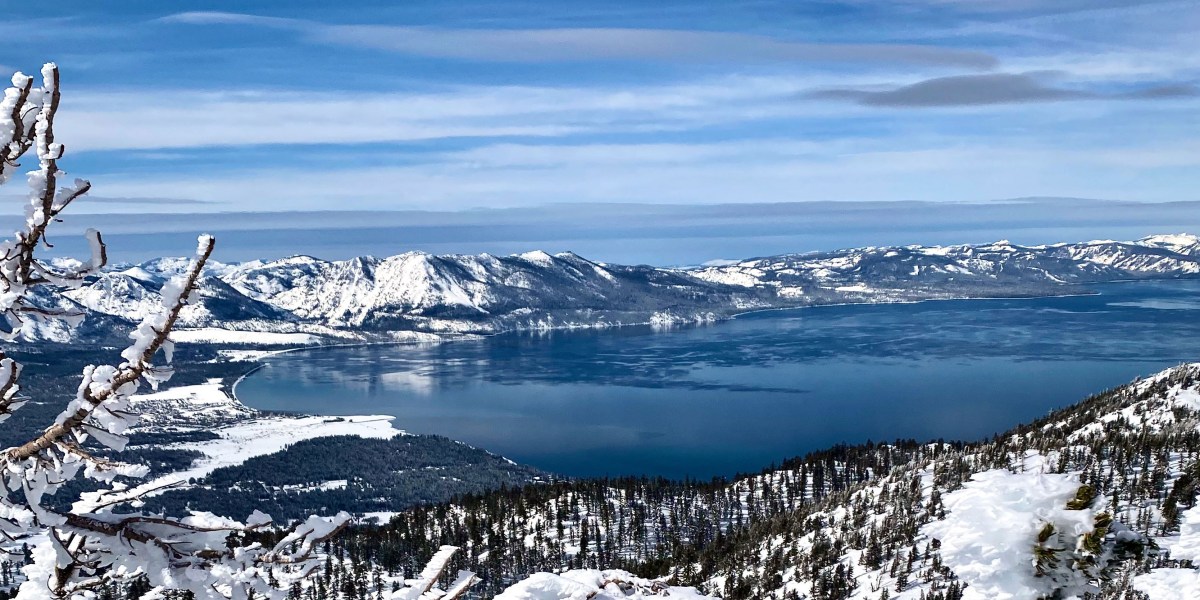The pair of climate researchers from the Desert Research Institute (DRI) in Reno, Nevada, skied down to this research plot in the middle of the resort to test out a new way to take the temperature of the Sierra Nevada snowpack. They were equipped with an experimental infrared device that can take readings as it’s lowered down a hole in the snow to the ground.
The Sierra’s frozen reservoir provides about a third of California’s water and most of what comes out of the faucets, shower heads, and sprinklers in the towns and cities of northwestern Nevada. As it melts through the spring and summer, dam operators, water agencies, and communities have to manage the flow of billions of gallons of runoff, storing up enough to get through the inevitable dry summer months without allowing reservoirs and canals to flood.
The need for better snowpack temperature data has become increasingly critical for predicting when the water will flow down the mountains, as climate change fuels hotter weather, melts snow faster, and drives rapid swings between very wet and very dry periods.
In the past, it has been arduous work to gather such snowpack observations. Now, a new generation of tools, techniques, and models promises to ease that process, improve water forecasts, and help California and other states safely manage one of their largest sources of water in the face of increasingly severe droughts and flooding.
Observers, however, fear that any such advances could be undercut by the Trump administration’s cutbacks across federal agencies, including the one that oversees federal snowpack monitoring and survey work. That could jeopardize ongoing efforts to produce the water data and forecasts on which Western communities rely.
“If we don’t have those measurements, it’s like driving your car around without a fuel gauge,” says Larry O’Neill, Oregon’s state climatologist. “We won’t know how much water is up in the mountains, and whether there’s enough to last through the summer.”
The birth of snow surveys
The snow survey program in the US was born near Lake Tahoe, the largest alpine lake in North America, around the turn of the 20th century.
Without any reliable way of knowing how much water would flow down the mountain each spring, lakefront home and business owners, fearing floods, implored dam operators to release water early in the spring. Downstream communities and farmers pushed back, however, demanding that the dam was used to hold onto as much water as possible to avoid shortages later in the year.
In 1908, James Church, a classics professor at the University of Nevada, Reno, whose passion for hiking around the mountains sparked an interest in the science of snow, invented a device that helped resolve the so-called Lake Tahoe Water Wars: the Mt. Rose snow sampler, named after the peak of a Sierra spur that juts into Nevada.

